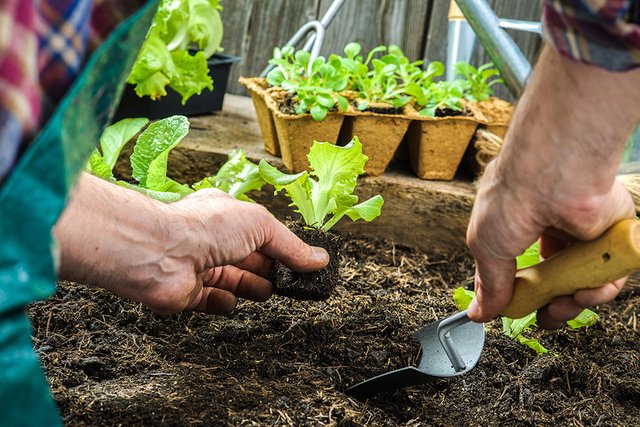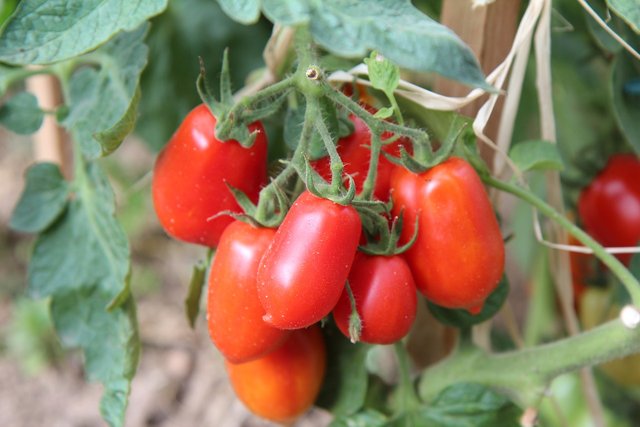Hello Stemians, #ecosteemers, @homesteaders, @cleanplanet and @ecodesigns!
On my last post I approached the question of the plants to choose for our project. Taking into account the conditions of sun exposure, space, soil type and climate, our company must be thought and planned to optimize the desired results, be it for the production of horticulture, or to decorate our balconies with colors, or to decorate and to house the house, helping to purify the air and emanate a pleasant aroma.
So, all the information is welcome, so that the registration is ready, and do not end with those disappointed or frustrated with the results (or the absence of them ...).
My personal bid is to create a small garden in a marquee, many, improvised, betting on vegetables that I have already delayed the use of home. Putting together this is experimenting with some flowers, such as lavender, to test your ability to house a home, and some plants that are allegedly purified for domestic use, a theme that you have yet to explore.
In view of this personal plan, when choosing a next berry, you can download a series of questions and answers, visiting the season, temperature, landscape, nature of the soil and the day-night cycle. We must then understand the best time to start cultivating a given plant because the results should be greater for the development and success of the new plant.
The simplest way is to maintain a calendar, with dates of the main stages of plant cultivation: sowing, planting, and harvesting.
I developed a personal spreadsheet calendar because it allows me to eventually put notes in the respective cell for a given month. It works as a kind of horticultural calendar, still in development. Over time I will introduce data on each plant.
I recommend that you create one, customized.
The important thing to keep in mind is that there is a certain time of year for each plant to be sown, planted and harvested. It is important to have a calendar that will help us organize our horticultural cycle.
But what does the act of semar consist of? And why is it transplanted? And when and how is it harvested? What can you gather?
To sow!
Let us first ask:
What is a seed? </ H4>
Seed is the mature and already fertilized ovum of the gymnosperm or angiosperm plants.
It consists of:
tegument or shell (with forehead and tegmen)
embryo
endosperm (involving it)
Font
Seed is the mature and already fertilized ovum of the gymnosperm or angiosperm plants.
It consists of:
tegument or shell (with forehead and tegmen)
embryo
endosperm (involving it)
Font
Without the need to become overly technical, we can conclude that the seed is a kind of egg, ready to hatch as soon as favorable conditions are found. These conditions can pass through humidity, temperature, minerals, surrounding pH, among others. These vary from species to species.
Finding the conditions that most favor the plant in question, there is the process of germination.
This new process involves the development of the radicle, which will give rise to the root, with the function of sustaining the plant and absorbing water and nutrients. Then the stem and the first leaves are formed.
What is planting? And transplanting?
But for what to plant? When sowing the seed grows and ready! Already on earth ... where it will grow ...
But it does not have to be that way necessarily.
There are, first of all, the plants, usually for sale in markets and specialized stores, already after the germination phase that we can buy for planting </ b> at home, in the garden, in the garden or in the field . This allows us to exceed the waiting time for germination and development of the plants, we lower the risk of a non-germinating seed, and we can still choose the plants that look the best. The other advantage is that we can simulate optimal germination conditions in a controlled environment, and then transplant the small plant into a larger vessel and eventually into a location more exposed to the now favorable climate.
The much desired harvest! </ h3>Uma definição assim já faz mais sentido!
I think it is self-explanatory ... The final product we want to achieve is the harvest, whether it be leaves, fruits, roots, the harvesting of memories of the perfumes and colors of flowers, harvesting cleaner, greener domestic air, and the ultimate harvest of the fruits we will plant on this journey: the proof that it is possible to "garden" at home, in pots, with low costs, and in creative ways, and #ecofriendly.
If plants like lettuce or pak-choi we harvest the leaves, the carrots and the radishes we take root, the tomato and the strawberry, the fruit! Flowers will not only collect colors and odors, but also a great way to attract small insects that help in the fertilization of our plants. There are also very creative ways of taking advantage of the inedible "remains" of our plantations, one of which is the production of homemade compost and humus!


This post contained some typos in its mentions that have been corrected in less than a day. Thank you for your quick edit !
If you found this comment useful, consider upvoting it to help keep this bot running. You can see a list of all available commands by replying with
!help.Downvoting a post can decrease pending rewards and make it less visible. Common reasons:
Submit
You lifestile must be bad then.
Downvoting a post can decrease pending rewards and make it less visible. Common reasons:
Submit
Yes. However, I have not hoodwinked you as such.
Downvoting a post can decrease pending rewards and make it less visible. Common reasons:
Submit
@djimirji up!
Posted using Partiko Android
Downvoting a post can decrease pending rewards and make it less visible. Common reasons:
Submit
Este post recebeu 5.00% de upvote da conta @steemitportugal!

Obrigado por fazeres parte da comunidade @steemitportugal .
Downvoting a post can decrease pending rewards and make it less visible. Common reasons:
Submit
Congratulations! This post has been upvoted from the communal account, @minnowsupport, by Martusamak [Portuguese] from the Minnow Support Project. It's a witness project run by aggroed, ausbitbank, teamsteem, someguy123, neoxian, followbtcnews, and netuoso. The goal is to help Steemit grow by supporting Minnows. Please find us at the Peace, Abundance, and Liberty Network (PALnet) Discord Channel. It's a completely public and open space to all members of the Steemit community who voluntarily choose to be there.
If you would like to delegate to the Minnow Support Project you can do so by clicking on the following links: 50SP, 100SP, 250SP, 500SP, 1000SP, 5000SP.
Be sure to leave at least 50SP undelegated on your account.
Downvoting a post can decrease pending rewards and make it less visible. Common reasons:
Submit
Hi, @micaelacf!
You just got a 0.28% upvote from SteemPlus!
To get higher upvotes, earn more SteemPlus Points (SPP). On your Steemit wallet, check your SPP balance and click on "How to earn SPP?" to find out all the ways to earn.
If you're not using SteemPlus yet, please check our last posts in here to see the many ways in which SteemPlus can improve your Steem experience on Steemit and Busy.
Downvoting a post can decrease pending rewards and make it less visible. Common reasons:
Submit